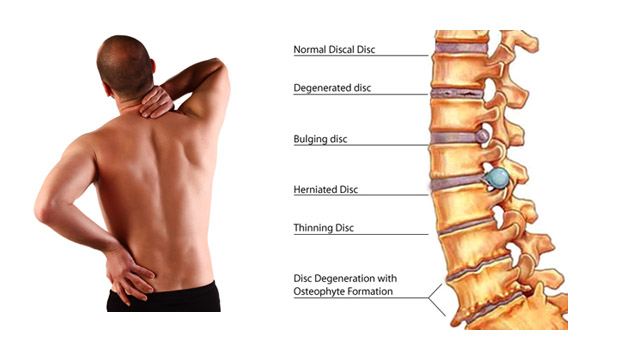Usual intestinal root causes of chest discomfort in kids are gastroesophageal reflux disease, peptic ulcer condition, esophageal spasm or swelling, as well as cholecystitis. Rare gastrointestinal causes include esophageal strictures, international body, and consumption of caustic substances. Breast pain triggered by GERD generally is described as a burning discomfort in the epigastric location that often has a temporal partnership to food consumption. Histamine-2 blockers or proton pump inhibitors are the essential of treatment for GERD. If signs and symptoms suggest cholecystitis, prompt recommendation to an expert as well as treatment with antibiotics are shown.
Tachycardia or tachypnea may be present with any of the severe reasons for pleuritic breast discomfort however must increase suspicion for pulmonary blood clot, pneumothorax, or myocardial http://martinwaem901.trexgame.net/abdominal-discomfort-causes infarction. Your basic doctor might refer you to a pediatric cardiologist, a doctor who concentrates on heart troubles in kids. The pediatric cardiologist will listen to your kid's heart and ask questions regarding the scenarios that led to the chest discomfort, your kid's case history, and the family medical history. The doctor will certainly read an electrocardiogram, a document of the electric activity of your child's heart, to identify whether a heart trouble may be causing your youngster's symptoms. Some reasons are not dangerous to your wellness, while various other causes are severe and also, in some cases, deadly. Gastro-esophageal reflux disease, typically simply referred to as heartburn, can provide you chest discomfort.

Symptoms And Signs
This can result in discomfort or palpitations in the breast in addition to shortness of breath. Abnormal heart beats may lead to regular or irregular heartbeats that can be too fast or slow. Fast heart beats may lead to palpitation signs and symptoms, while sluggish heartbeats might lead to weakness as well as problem breathing. The major blood vessels that are linked to the heart can be harmed by weak point or elevated pressure leading to arterial breakdown or tearing of the vessels.
How can you tell the difference between a pulled muscle and pleurisy?
Pleuritis can cause pain that feels like a pulled chest muscle. It is generally sharp, sudden, and increases in severity when taking a breath. Unlike a strained muscle, pleuritis may cause additional symptoms, such as fever and muscle aches.
A person experiencing arterial breakdown might have serious breast discomfort similar to that of a myocardial infarction. Pleuritis.Also well-known aspleurisy, this is an inflammation or irritability of the lining of the lungs and chest. You likely really feel a pain when you breathe, cough, or sneeze. The most common sources of pleuritic upper body pain are microbial orviral infections, lung blood clot, and pneumothorax. Various other less usual reasons includerheumatoid arthritis, lupus, andcancer.
When To Require Breast Discomfort.
For patients experiencing severe pain, NSAID treatment and also warm compresses requested a couple of days might be advantageous. Location of discomfort sometimes may help in distinguishing the cause. Localized or identify discomfort generally is chest-wall or pleural; scattered upper body pain normally is because of underlying visceral disease of the lung or heart. Radiation of breast pain to a certain location might suggest a certain reason.
With all that in mind, it's not surprising that that chest pain or tightness are common asthma signs and symptoms, according to the Mayo Clinic. Some individuals with bronchial asthma even say that their lungs really feel throbbing, Dr. Besser claims. Beyond that as well as problem breathing, bronchial asthma can additionally cause wheezing and coughing. Pleuritic upper body pain is identified by sudden and extreme sharp, stabbing, or burning discomfort in the chest when inhaling as well as breathing out.
Heart Truths For You.
Without the blood it requires, the heart muscle mass starts to pass away. Described as substernal stress brought on by exertion and also eased by rest, breast pain triggered by aortic stenosis resembles the type experienced by patients with coronary artery disease. Discomfort in aortic stenosis is caused by the heart muscular tissue having to pump blood with a tightened aortic shutoff. When the area between the pleurae starts to fill with fluid, as in pleural effusion, the upper body pain can be eased yet a shortness of breath can result, considering that the lungs need space to increase throughout breathing. Some cases of pleuritic chest discomfort are idiopathic, which indicates that the specific cause can not be determined. Various other reasons includebacterial infection, pneumonia, pulmonary embolism, autoimmune conditions, lung cancer cells, complying with heart surgical procedure, pancreatitis and also asbestosis.
If the pneumothorax is tiny, it might disappear on its own. If huge, a breast tube is positioned through the skin as well as breast wall surface into the pleural room to eliminate the air.
Should You Fret About Your Youngsters Breast Pain?

Chest-wall injury can generate localized pain and tenderness and also usually is related to swelling or erythema at the website of injury. Young adults that experience breast muscular tissue pressure generally provide a history of weight-lifting. For clients that have a history of substantial injury to the upper body, the findings of serious breast pain, arrhythmia, as well as shortness of breath may suggest myocardial contusion as well as hemopericardium. Once again, if you're an otherwise healthy and balanced person, it's quite most likely that your chest pain is due to something less severe than a cardiac arrest, like GERD.
When should I go to the ER for chest pain?
Call 911 or other emergency services if you have chest pain that is crushing or squeezing and comes with any of the following symptoms: Sweating. Shortness of breath. Nausea or vomiting.
Patients that have sickle cell disease may present with breast pain as a result of severe chest disorder or pulmonary infarctions. Teenagers energetic in gymnastics and also most various other sporting activities are prone to chest-wall trauma. In one series, skeletal injury was the source of breast pain in 2% of youngsters.
